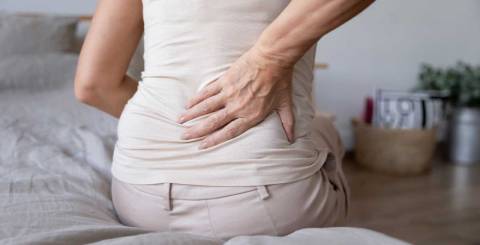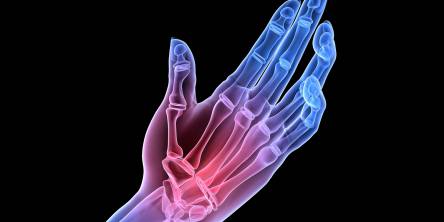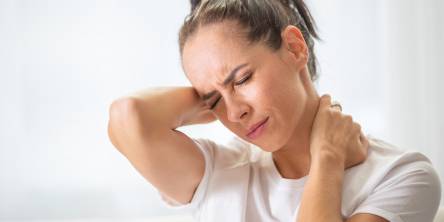7 Surprising Facts About Lower Back Pain

Lower back pain is a common and often severe issue that affects millions of individuals throughout the world. While many of us have dealt with lower back pain at some point in our lives, there are a few interesting facts about this illness that you may not be aware of. In this article, we'll delve into seven intriguing and lesser-known facts about lower back pain, shedding light on its causes, impact, and potential solutions.
1. Age is not the sole culprit
Lower back pain may be interpreted as a natural result of aging. While it is true that the likelihood of lower back pain rises with age because of wear and tear of the spine, this issue can affect young people and even teenagers.
For example, poor posture, sedentary lifestyles, obesity, and genetic susceptibility can play a role in lower back pain at any age. Understanding that age is not the only risk factor can help people of all ages in taking preventive steps.
2. Emotions can play a role
A person's emotional and mental health can have an impact on the intensity and duration of lower back pain. Stress, anxiety, and depression may aggravate pain by increasing lumbar muscle spasms and decreasing the body's ability to manage discomfort.
Chronic pain, on the other hand, can cause emotional distress, creating a vicious cycle. Lower back pain can be effectively treated on both the physical and emotional levels with therapies such as cognitive-behavioral therapy (CBT) and mindfulness.
3. Your job may be a contributing factor
When addressing the underlying causes of lower back pain, work-related risks are sometimes neglected. Jobs that demand prolonged sitting, heavy lifting, or repetitive motions enhance the probability of getting lower back pain.
Office employees who sit at their desks for long periods of time, construction workers who move large loads, and healthcare professionals who constantly bend and twist are all at risk. These job-related concerns can be reduced by ergonomic changes, good lifting techniques, and regular breaks.
4. Smoking and lower back pain
Smoking is not just bad for your respiratory health; it also has an unexpected relationship to lower back pain. Smoking limits blood flow to the spine, reduces nutrition supply to the intervertebral discs, and inhibits the body's natural healing processes. Smokers are more likely to suffer from ongoing and severe lower back pain than nonsmokers. Giving up smoking not only improves your general health, but it can also help relieve pain in your back.
5. Core strength matters
A strong and balanced core is essential for preventing and dealing with lower back pain. The core muscles, which include the abdominals, obliques, and lower back muscles, support the spine. Weak core muscles may result in poor posture, instability, and additional stress on the lower back. Regular core-strengthening exercises, such as planks, bridges, and leg lifts, can help prevent the risk of lower back pain while enhancing treatment for people who are currently suffering from it.
6. It's not always a structural problem
While structural problems such as herniated discs or spinal stenosis can cause lower back pain, they are not the only causes. Pain can be triggered by muscle imbalances, inflammation, or radiated pain from other parts of the body. This is why a thorough examination by an experienced doctor is essential for an accurate diagnosis and effective management. In certain cases, physical therapy with targeted exercises may be more useful than surgery.
7. Bed rest is not always the solution
Patients suffering from lower back pain were usually encouraged to stay in bed. However, studies have revealed that prolonged bed rest can aggravate the problem. Inactivity can cause muscular weakness and stiffness, increasing the pain. A combination of modest activity, such as walking and stretching, and pain management measures, such as ice or heat therapy, tends to be a better option. People should gradually resume their usual activities after a brief period of bed rest.
Similar Articles
Veins on the skin that produce swelling may indicate varicose veins. Varicose veins are a vein disorder, and their role is to return blood from the leg to the heart. The specific cause of varicose veins, a prevalent condition, is unknown.
A healthy spine is the foundation of a functioning body. It supports your frame while allowing you to bend, flex, and move more freely. However, most people neglect the importance of spine health until they have a back condition.
Whether you're having trouble moving body parts or experiencing worsening joint discomfort, an orthopedic doctor can help. They can treat anything from a minor strain to complex treatments such as shoulder replacement. The appropriate treatment from an orthopedic expert at the right time might relieve your pain and improve your symptoms in less time.
When it comes to trauma, professionals in the mental health sector readily admit that no single style of therapy or intervention is appropriate for every case or individual.
Rheumatoid arthritis (RA) is a type of autoimmune disease that occurs when the body's immune system attacks the lining of joints, causing inflammation and causing symptoms like pain and stiffness. RA usually affects both sides of the body in a similar way, but small joints of the hands and feet are often affected first, often knuckle joints of the fingers.
An electroencephalogram (EEG) is a test that measures the electrical activity in the brain. Healthcare experts utilize it to evaluate and comprehend neurological illnesses, sleep disorders, and brain damage.
So, your back decided to stage a mutiny and gift you with a herniated disc. Lovely. Now what? If you’re imagining a future filled with endless discomfort and groaning every time you get out of bed, don’t fret. There are plenty of ways to tackle a herniated disc and get back to living your best, pain-free life.
Back pain – it’s not just a matter of “I lifted a heavy box, and now my back hurts.” It’s often the result of a complex dance between our minds and bodies, with stress, anxiety, and emotions playing lead roles. If you’ve ever woken up with a stiff back after a tough week or felt your spine twinge just from reading a long email chain, you’re not alone.
Chronic pain is a medical problem that affects many people around the world. Unlike acute pain, which is a short-term response of the body to tissue damage, chronic pain lasts longer, often without obvious physical damage. It can last from several months to several years, and its consequences can affect all aspects of a person's life









